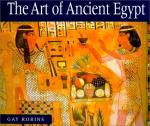|
This section contains 688 words (approx. 3 pages at 300 words per page) |

|
All dates in this chronology are approximations (c.) and occur before the common era (B.C.E.).
| 5000 | Archaeological evidence that flax grew in Egypt suggests that linen fabric was available at this early date. Flax was originally an import to Egypt, perhaps from Syria. |
| 4400–4000 | The first Egyptian depiction of a horizontal loom for making linen comes from this period. |
| 3100–2675 | An ivory statuette depicts a king wearing a patterned cloak. |
| 3100–2800 | Kings wear both the White and Red Crowns, symbols of rule over Upper and Lower Egypt. |
| King Narmer wears the earliest known archaic wraparound kilt. The style persists into the New Kingdom for both men and women. | |
| Kings begin to wear the striped Nemes kerchief and the Uraeus snake over the forehead. | |
| A brown shirt from this time period, excavated from Tarkan, shows the first evidence of dyed clothing. | |
| 2675–2170 | Men wear both close-cropped... |
|
This section contains 688 words (approx. 3 pages at 300 words per page) |

|




